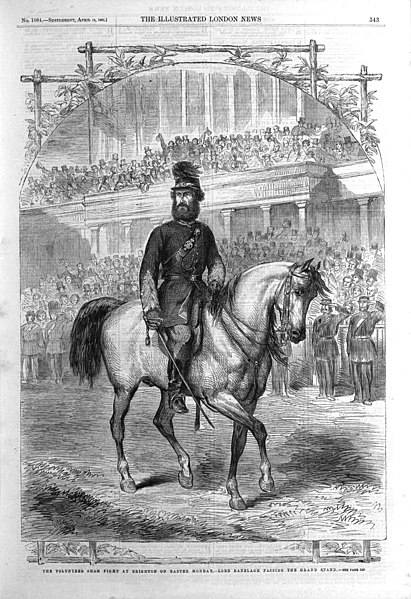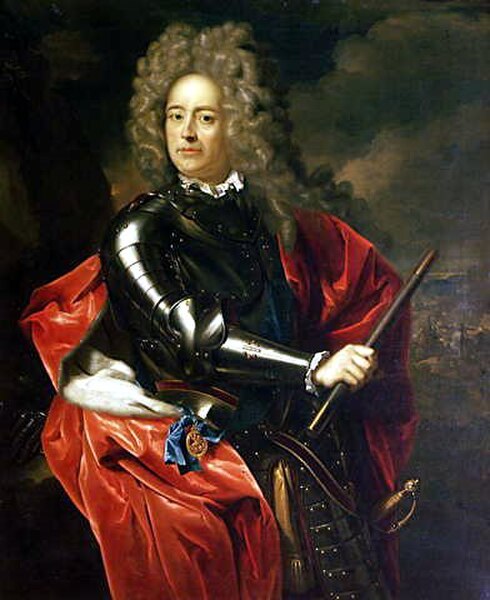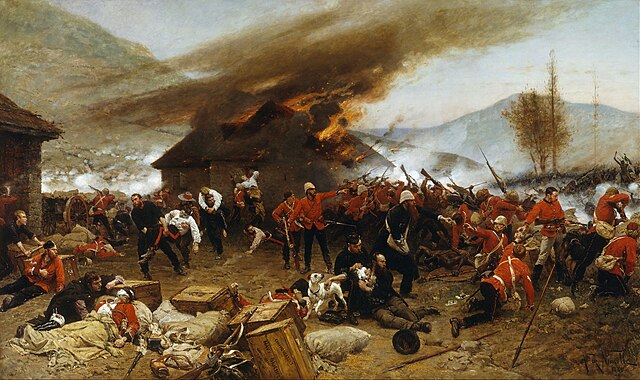The Volunteer Force was a citizen army of part-time rifle, artillery and engineer corps, created as a popular movement throughout the British Empire in 1859. Originally highly autonomous, the units of volunteers became increasingly integrated with the British Army after the Childers Reforms in 1881, before forming part of the Territorial Force in 1908. Most of the regiments of the present Army Reserves Infantry, Artillery, Engineers and Signals units are directly descended from Volunteer Force units.
Officer of the Exeter & South Devon Volunteers in 1852
Thomas Heron Jones, 7th Viscount Ranelagh leading the Volunteer gathering in Brighton, 1863, depicted in the Illustrated London News
The British Army is the principal land warfare force of the United Kingdom, British Overseas Territories and Crown Dependencies, a part of the British Armed Forces along with the Naval Service and the Royal Air Force. As of 1 January 2024, the British Army comprises 75,166 regular full-time personnel, 4,062 Gurkhas, 26,244 volunteer reserve personnel and 4,557 "other personnel", for a total of 110,029.
Lord Protector Oliver Cromwell
Lord General Thomas Fairfax, the first commander of the New Model Army
John Churchill, 1st Duke of Marlborough, was one of the first generals in the new British Army and fought in the War of the Spanish Succession. He was a noted ancestor of Sir Winston S. Churchill, later famous Prime Minister during World War II.
In the 1879 Battle of Rorke's Drift, a small British force repelled an attack by overwhelming Zulu forces; eleven Victoria Crosses were awarded for its defence.






